This is not a sponsored post. All costs were covered by me and all opinions are my own. I genuinely enjoyed the trip so much that I wanted to document my experience and to share it with you all. This Kerala travel guide should give you an idea of what you can expect, not just from this tour, but from a visit to this incredible part of India.
Kerala Travel Guide | The Benefits of Booking a Tour
Now I don’t very often book organised tours (because I much prefer the freedom of planning and organising my own adventures), but when you work a full-time job with a limited amount of leave, they allow you see and do a lot more in a much shorter space of time compared to an independently organised trip.
When you travel independently, a large chunk of your time is spent trying to figure out the logistics of your itinerary – bus/train times and tickets, sightseeing, accommodation options and cafes/restaurants to eat at – so it takes a lot longer to actually see and do everything you’d planned.
There’s no way I would have been able to see and do everything I managed to on the On Foot in Kerala tour I booked through adventure travel company, Explore, had I organised the trip myself. Well, not unless luck had been on my side for the entire 10 days. Or, I was Superwoman.
For starters, without a very knowledgeable and competent local guide, I would most surely have gotten lost somewhere in the wilderness of the Western Ghats. And without the positivity, enthusiasm and camaraderie of my brilliant trekking group and tour leader, I would undoubtedly have found it difficult to remain so upbeat and cheerful in the midst if the incessant rain that refused to let up for the majority of the trip. Oh, and the leeches.
Now I didn’t plan for the rain. Who does? Yes, you accept that if you visit a country during their wet season, there will be a higher chance of some rather heavy downpours and bouts of torrential rain. However, when you visit during the dry season (Kerala’s South West Monsoon normally starts around the end of May or beginning of June and lasts until the end of September; I visited at the end of November), you expect the weather to be – mostly, at least – dry.
Unbeknownst to us a category 3 cyclone was heading towards us while we were trekking (we started our trek on day two of our 10-day trip), a cyclone that would end up travelling 4000 nautical miles in total, starting in the Gulf of Thailand, and ending near the coast of Gujarat in western India. Not only did it bring heavy rains with it, it also caused severe damages to structures and property in the Southern parts of Tamilnadu and Kerala, and sadly claimed the lives of at least 218 people.
But for us – until we got back to civilisation in Munnar and were able to check news reports – we had no idea why it just wouldn’t stop raining. In the middle of the dry season.
However, aside from the fact that we missed out on so many great views as a result of the thick cloud (one of the things that normally keeps me going on a tough hike up a mountain is the views I’ll be rewarded with when I reach the top), our hiking boots got so wet we were unable to dry them out (I flew home with wet feet), and for a large chunk of the time we were so focused on being on leech patrol that it was difficult to think about anything else, I actually had a fantastic time. And it was primarily as a result of being part of such a wonderful bunch of people on a professionally-run tour led by a guide who we instantly warmed to.
As well as being kind, thoughtful and a lot of fun, Rejanish won us over with his can do attitude, and the fact that he always had a smile on his face.
Sometimes it really is totally worth booking a tour to explore somewhere new.
First up, the basics.
Kerala Travel Guide |On Foot in Kerala – The Itinerary

Our itinerary offered a great mix of urban exploration and traditional village life. We watched the landscapes change from dusty streets lined with food carts, colourful street art and crumbling colonial buildings, to remote mountain vistas and lush green tea plantations as far as the eye could see.
Our accommodation ranged from simple camping with zero washing facilities and a hole in the ground toilet, to a luxury hotel with porters and a rooftop pool. And we probably experienced an equally diverse range of weather conditions too (with the exception of snow).
Day One: Arrive into Kochi
Our tour started and ended in the city of Kochi. I booked my own flights, because I find it usually works out cheaper this way.
Following a 12-hour flight via Muscat with Oman Air and a 2-hour journey across the city to Fort Cochin (the city’s historic centre), I finally arrived at my hotel at 5pm. But rather than having a lie down before meeting up with my trekking group an hour later, I decided to go for a walk, with the intention of photographing the famous Chinese fishing nets at sunset.
Mission accomplished 🙂
However in my sleep-deprived state, I’d forgotten to drop a pin on my map when I set off or to make a note of the name of the hotel I was staying at. So obviously I ended up lost with no way of finding out the exact location I needed to return to. For what seemed like forever I stood at a busy intersection in a blind panic before deciding to retrace my steps. Fortunately I arrived at the junction where I realised I’d gone wrong, and recognised the correct route back to my hotel. Although I was only 10 minutes late, everyone was there waiting for me (face palm). I do know how to create a great first impression.
Once we’d all made our introductions our guide took us all to a nearby restaurant for dinner. On a couple of the trips I’ve previously taken with Explore, we’ve been expected to pay a set menu price at the restaurants we’ve been taken to, with only a limited choice of menu items. I’m not a big eater so this means I’m guaranteed to end up with way more food than I can actually eat, and it’s cost me a lot more than I could really afford to pay. However, at this restaurant – and in fact at everywhere we ate in Kerala – we could choose exactly what we wanted to order, at a price we could afford. And if we didn’t want to order anything (as many of us didn’t at our lunch stop the following day), or if we wanted to grab some street food instead, then that was absolutely fine too.
In fact we all expressed a wish to eat street food for our meal one night in Munnar, and our guide Reggie happily accommodated our request.
Where we stayed in Fort Cochin: Hotel Bright Heritage. Great location close to St. Francis’ Church and the Chinese fishing nets. Comfortable, clean, spacious rooms with air con. Lovely roof terrace restaurant where breakfast is served every morning. Room rates seem to vary depending on the time of year; check the latest prices here.
Day Two: A walking tour of historic Kochi / transfer to Munnar
Although the city of Kochi is huge (with a metropolitan population of 2.1 million), as you wander through the laid-back streets of Fort Cochin and neighbouring Mattancherry you could be forgiven for thinking you were somewhere much smaller.
The historic centre of Kochi is where the Portuguese erected their first walled citadel, and where you’ll find the oldest European-built church in India (St. Francis’). You’ll also find influences from China (head down to Fort Cochin’s eastern shore and take a look at the traditional Chinese fishing nets), a 400-year-old synagogue, ancient mosques, Portuguese houses and the crumbling remains of the British Raj.
We took it in turns to try our hands at raising and lowering the Chinese fishing nets, wandered along the water’s edge checking out the day’s catches, took a peek inside St. Francis’ Church and Pardesi Synagogue, marvelled at some intricate lace creations at the same shop Prince Charles visited for his 65th birthday, and satisfied our curiosity with old buildings and antiques at Ginger House Museum and Restaurant, overlooking a tributary of Vembanad Lake in Mattencherry.
In the afternoon we began our bus journey inland to Munnar, where we would begin trekking the following morning. Whilst I did feel that our time in Kochi was a little rushed, I appreciate that it wouldn’t have been possible to see and do everything else, had we lingered in Kochi a little longer. You can always arrive into the city a few days before the tour starts, which is exactly what a few of our group members did. And what I would have done, had I more annual leave available.
Where we stayed: East End Hotel. I had a spacious room with a balcony overlooking the hotel’s well-manicured garden on a quiet road just steps from the city’s main thoroughfare. The bed was comfy, the shower was hot and there’s a huge buffet breakfast included in the price of the room. My only complaint was that the wifi was awful and only worked (very slowly) down in the lobby area. Check prices for the East End Hotel here.
Day Three: Hike to Seven Malai Hills, through tea, coffee and spice plantations
I was so excited to start hiking this morning, now that I’d gotten over my jet lag and adjusted to my new time zone. We all jumped in a couple of jeeps and were driven to the village of Nagarmudi (1500 m), from where we would begin our trek.
My excitement only grew as we neared Nagarmudi, and I caught my first glimpse of the tea plantations we’d be hiking through. I listed this as one of my highlights of my 10-day trek because despite having travelled to China and to Myanmar – both places where a lot of tea is grown – I’d never seen landscapes quite like those I witnessed just outside Munnar, in the Kannan Devan Hills. There was tea literally as far as the eye could see.
We took a steady walk uphill, stopping regularly so that our guide could introduce us to some of the local flowers, plants, herbs, and spices, impart snippets of information about the area and its people, and to talk us through the processes involved in the cultivation of the tea plants.
This is another advantage of joining a tour over travelling independently: the information you take away with you comes directly from the people who live and work in the country. Whilst you can probably find a lot of it online, there will be other pieces of knowledge that are not recorded anywhere else. You will also benefit from listening to and learning about the beliefs and opinions of the local people on topics that are important to them.
If you’re wondering why you always see these tall spindly trees growing amidst the tea, this is not a natural occurrence; the trees (Silver Oak) are planted in this way because they convert the atmospheric nitrogen into nitrates, which aids the growth of the tea plants.
Although it’s never guaranteed (and judging by how excited Reggie got when he spotted them, I’m guessing a sighting doesn’t actually happen very often), you may be lucky enough to spot some elephants during today’s hike. Considering that smack bang in the middle of a tea plantation was the last place (ok, not THE last place; that would probably be my back garden) I expected to see these creatures in the wild, I would never have spotted them had it not been for Reggie and our local guide.
But, along with every single one of our group members, I was very excited that we did.
We climbed through tea plantations like these up into the Seven Malai Hills, passing crops of coffee, cardamom, lemongrass, black pepper and mint as we made our way to the summit (1700 m).
At this point I wasn’t sure whether it was the altitude at which we were trekking that was causing the mist to roll in as quickly as it subsequently rolled out again, but I was pleased that at least it didn’t linger too long around those viewpoints.
Five minutes later and you couldn’t see any of the scenery behind me.
After our picnic lunch, we started our descent back to Munnar. And still, everywhere we looked, there were a seemingly endless number of tea plants. I swear I could honestly never tire of these views.
We all elected to have a look around the tea museum when we arrived back into the city. Whilst there was a member of staff on hand to talk us through the processes involved in transforming the freshly picked tea leaves into the kind of tea that we drink, and to demonstrate the function of the various machines used, I don’t feel that it was quite as interesting as a working tea factory would have been. Were I to do the trip over again, I would elect to visit the latter, but nonetheless it was a good opportunity to purchase some tea for everyone for Christmas.
Where we ate: One night we ate at the Three Rivers Restaurant and the following evening we pigged out on street food (vada, paratha, and Chana Masala (chick pea curry)) for a fraction of the price. Ok I’ll admit I preferred the food at Three Rivers (I had a lovely Paneer Kanai) but it did cost me almost four times as much.
Day Four: Trek to Silent Valley through tea estates and shola forest
We left our big packs (along with civilisation and washing facilities) at the hotel in Munnar, and set off with solely the clothes on our backs and the contents of our day packs for the next three days. We made a brief stop at the Floriculture Centre (where I took far too many photos of cacti and orchids; two of my faves) before continuing on to the start of our trek.
It had started raining by this point, and whilst the rain did ease off intermittently throughout the day, the cloud lingered around on a much more permanent basis.
We started our hike at around 1600 metres, walking through landscapes blanketed with tea plantations and sholas (a kind of high-altitude evergreen forest in southern India) of eucalyptus.
We spotted villages dotted amidst the tea-covered hillsides, a few of which we passed through during our trek. I loved the fact that the tiny houses were constructed in neat lines, each one painted a slightly different shade of vibrant blue or green.
I also loved the fact that when I tried to take a sneaky photo of one of the villagers (I loved the way his white outfit contrasted with the rich green of the landscape through which he walked), and he spotted me, he waved and smiled rather than covering his face or averting my gaze.
I always looked forward to our arrival into one of these little villages, as they offered us genuine glimpses into the lives of the people who inhabited the areas through which we walked. They also offered the promise of warm, sweet masala chai or strong coffee.
After lunch we began the climb towards our camp in the Silent Valley. All hopes of being able to see anything at any of the viewpoints we passed were dropping the higher we climbed.
There was one point at which it started raining, and we all knew at once that this was not going to be one of those light showers we’d been experiencing on and off throughout the day. In the time it had taken me to remove my backpack, unpack my waterproof backpack cover, pack my camera away, don my rain jacket and cover my backpack with said waterproof cover, I was already pretty soaked.
The heavy rain didn’t let up for the final 90 minutes of our hike. I have no idea what the scenery was like for this part of the trek because I had my jacket zipped up and my hood pulled tight so that all I could see were the feet of the person in front. Strangely this was the one thing that kept me focussed; that kept me going – following the footsteps of the person in front of me. And that’s exactly what I did right up until our arrival at Silent Valley Camp
I have never been so pleased to see a campsite sign before in my life.
Fortunately the campsite owners were busy lighting a fire when we arrived, a fire around which we would all sit, attempting to dry out our sodden socks and hiking boots.
We all tentatively removed our leech socks (which in retrospect I’m so glad Reggie had instructed us to wear for the final part of the climb) and there were several screams (including one by me when I spotted one of the little buggers on my shin) as people desperately tried to remove them from clothing, boots, socks and exposed flesh. One of our sensible group members had packed some single serving salt sachets, but insect repellent spray works just as well to remove them (as does burning them with a lit cigarette). Just don’t try and pull them off once they’ve gotten hold, because their mouth parts can remain under your skin and cause an infection.
Sound pretty gruesome? Unbeknownst to us, this was only the beginning of what would turn out to be several more encounters with these blood-sucking ninjas.
Day Five: Trek to Meesapulimala Peak (2635m)
Day five was all about the uphill climbs. Literally as soon as we left camp we started climbing, up a wide, rocky, muddy and tree-lined track that offered us a little shelter from the persistent rain.
I’d not planned for rain before I left England but I’d packed my newly-purchased Rab Downpour Jacket, just in case. The name suggested it may keep me dry in the event of a downpour (“a sudden and unexpected heavy fall of rain”), but I wasn’t holding out much hope for staying dry under the sheer volume of rain we experienced during the entirety of our three-day trek. However the good news is that I did! So, if you want a ‘tried and tested in the worst rain I’ve ever experienced on a trek kinda jacket’, you really can’t go wrong with this one!
Today’s climb took us through rough grassland and up on to the ridge line, where we continued to climb through patches of open grassland towards Meesapulimala Peak.
Although the rain made the landscapes appear pretty dull and dreary, the raindrops looked so pretty on the plants and flowers.
This is us at the summit of Meesapulimala Peak. Apologies for the poor quality photograph but our photographer (local guide, Tankaraj) couldn’t wipe the raindrops off the lens fast enough. It may give you some idea of the kind of conditions we were trekking in.
I found today’s hike hard on my calves, but I rarely had to stop to catch my breath – proof that you don’t have to do hill walking or long-distance trekking at home to manage these sorts of trips; regular cardio-vascular work (running, rowing, cross-training or cycling) will prepare you sufficiently enough.
After stopping for a (very!) late lunch at a mountain refuge down in Rhodo Valley, the majority of our group waited for jeeps to transport them back to our campsite, whilst those of us who didn’t feel that we’d done quite enough exercise for the day chose to walk. Truth be told, the main reason I’d chosen to walk was because I’d gotten a bit of a chill when we stopped at the refuge, and walking was the best method I could think of to combat the effects of that. But I’ll let my fellow trekkers believe that it was because I was hardcore! 😉
Fitbit daily total: I forgot to record yesterday’s totals but today’s hike totalled 32,799 steps | 21 kilometres | 2343 calories | 319 floors
Day Seven: Hike to Top Station through villages and plantations
As we left the camp this morning we were hopeful that we would be treated to some better weather on the final day of our trek. There were patches of blue sky around and the sun was definitely shining on this hydrangea.
Whilst the sun may have disappeared as soon as we started walking and we did have a few heavy downpours, it didn’t rain anywhere near as much as it had over the previous couple of days. Wildlife began to come out of hiding and we spotted the odd orchid amidst the bracken.
We climbed steadily through pine and rhododendron forests with what would have been some spectacular views out to our left, had there not still been so much low-lying cloud around. We caught glimpses of rivers snaking their way through the the surrounding countryside and villages nestled in the valleys.
Of course all the climbing we were doing meant that a descent would follow. A descent that it turned out would take us through leech-infested forests. Our guides gave us one piece of advice:
“Keep moving. If you stop you are giving the leeches time to attach themselves.”
This was all well and good but when you spot a leech attempting to curl its way into your hiking boot, there’s no way any sane person is just going to leave it there to continue its journey. And it’s very difficult to get the leeches off while you’re on the move.
It also didn’t help matters that the descent was steep and the paths were both muddy and slippery. You had to very precisely split your focus between being on leech patrol (i.e constantly checking your boots, your leech socks, your leggings/walking trousers, and sometimes even your jacket; leeches aren’t just confined to plants on the ground it seems) and watching your footing/planning your route.
I don’t have any photos of this section for obvious reasons.
I thought I had the whole leech removal method sussed. I’d picked up a sturdy stick which I used to flick them off as soon as I spotted them and before they’d found flesh, but then just as we were making our descent towards the tea plantations and to Yellapatty, I felt a mild irritation – almost like an itch – on my right hand side just above my hip. In my head I knew I’d been bitten but I kept trying to convince myself I was being paranoid. In the end I plucked up the courage to lift my jacket and t-shirt and take a look. And there it was, on my on my skin – underneath my t-shirt (immediately raising the question of how the hell it got there) – one of those deceptively cute-looking blood sucking ninja leeches.
Having never been bitten by a leech before, I panicked.
“Somebody get it off me!”
Fortunately my supportive group members rallied round and – with the aid of some insect repellent spray – managed to remove it. It had left behind a tiny red dot, which had grown in size and turned purple by the time we reached the village. And as I type this, a month and a half after returning from my trip, I can still see the mark on my skin.
I was so pleased to be walking through the tea plantations once again, as it meant that we were outside of leech territory – for the time being.
The village of Yallapatty was a lovely breath of fresh air. Not only was it refreshing to see wildlife that wasn’t black, small and worm-like and wanted to suck our blood, but it was also uplifting to see so many friendly faces, colourful temples, ornate churches, and welcoming tea shops.
A warming cup of masala chai and a couple of cashew nut cookies later and we were ready to take on the world once again (although I think I’d had my fix of leeches for the day).
I’m wondering whether the tea shop pictured below was built to accommodate the tree, or whether the tree sprouted up after the tea shop was built, and the owners decided that actually it made a rather nice feature, so left it be.
Our final climb and subsequent descent saw us walking past some spectacular mountain scenery, countless peaks rising up above the clouds.
When we arrived at our camp for the night our tents were already erected. One of the porters was busy setting up our dining table and chairs whilst the others were in the process of building our toilet. Yes, you’ve read that right: they were making us a toilet (including cubicle and washroom) from scratch.
It always impresses me just how skilled and resourceful these porters can be. Not only that, but our cook, Sheila was also incredible. The kind of meals she was turning out, from her kitchen in a tent, were nothing short of amazing. And so much tastier than any of the restaurant meals we’d eaten thus far.
Fitbit total: 35,378 steps | 22.7 kilometres | 2396 calories | 192 floors
Day Eight: Drive to Kumily through tea plantations and an overpriced cooking demonstration
Even in spite of the cloud, the scenery we drove through today on route to Kumily was incredible. Although I knew that I wouldn’t realistically be able to use any of the photos I was taking through the window of the bus, I still couldn’t stop snapping shot after shot. Every five minutes.
We even got to see some more elephants on route as well. The spot – known as “Elephant Crossing” – has clearly earned its name for a reason, but I still consider it quite serendipitous that there were in fact elephants crossing when we drove past. And the light was almost perfect for photographing them.
When we arrived into Kumily it was raining so hard that huge puddles had already started forming on the uneven roads. The only saving grace was our luxurious hotel. My room at the Grand Thekkady was big enough to swing a tiger in the shower was amazing! (but then, aren’t they always after three days without one?)
We had just enough time to properly enjoy the shower, and use the laundry facilities at the hotel before heading off to our cookery class. This was one experience I was really looking forward to because all the food I’d eaten had tasted amazing and I desperately wanted to learn how to recreate some of the dishes in my own kitchen.
But, disappointingly this was the only part of the trip I really didn’t enjoy. Aside from chopping a few onions, okra and green beans, and stirring a few of the dishes whilst they were cooking, we didn’t have any involvement in the class at all. We were simply watching a demonstration. Moreover, none of us warmed to our host. We felt he was sleazy, uninspiring, and a little chauvinistic. In reality it was the two ladies in the kitchen who were doing all of the work, but he was getting all the attention and taking all of the credit. The workshop was also incredibly rushed, and to this day I’ve still not received the recipe book that was promised to us after the class.
I’m not apportioning blame to our guide for this, but I have made the suggestion to Explore that they may want to try a different cookery school in Kumily. 1000 rupees per person (£11.29) was also ridiculously bad value for money.
Where we stayed: Grand Thekkady. Central location, spacious room, amazing shower, fantastic inclusive breakfast, and laundry facilities available. Check prices and book here.
Day Nine: Trekking through Periyar National Park and a visit to a Spice Garden
We woke early for this morning’s trek to find it still raining harder than ever. In fact I don’t think it had stopped raining since we arrived. Although the trek through Periyar National Park was the main reason for coming to Kumily, we almost didn’t go. If we’d have taken Reggie’s advice – which was that the visibility would be very poor and that there would be a lot of leeches – we would have stayed at home.
But Pete suggested that the exercise would be good and several others suggested that we hadn’t come to India to sit in a hotel room. And it was true, although I have to admit that I was sorely tempted to stay.
We stopped at the Ranger’s office to don our leech socks and spray our hiking boots with mosquito-repellent spray, before one of the park rangers proceeded to sprinkle tobacco powder all over our feet. This was another strategy to deter the leeches, however I did wonder how effective it would be in such torrential rain.
My feet were squelchy within about five minutes (either I’d somehow managed to kill my trusty hiking boots on this trek or they just couldn’t cut it in such wet conditions), and within 10 I’d pulled the cord on my hood so tight that I could barely see anything other than my own two feet and those of the person in front of me. Liz had gotten a leech inside her lip and that freaked me out so badly that I did’t want to leave any more of my face exposed than was absolutely necessary.
At one point I was convinced I felt a leech on my neck, inside my jacket, but I didn’t want to open up my jacket to investigate because I was worried I’d just be inviting more leeches in.
Yes, it was a pretty miserable two or three-hour trek, but on the plus side we did see a bison (they’re huge!) and a couple of Sabor deer. Back at the ranger’s office when we all began to remove our jackets and leech socks, I realised that yes, I had in fact been bitten by a leech, and I found one crawling around on the inside of my jacket (it may well have been the same one that bit me on the neck!). However, Liz (a different Liz to the one who found a leech inside her lip) found three bites on her stomach. The way in which the blood was running down in vertical lines made it look like she’d been scratched by a very angry tiger.
Back at the hotel we showered and enjoyed a well-earned breakfast before heading off to have a look around Abraham’s Spice Garden.
Over the past few years I’ve been making more of an effort to be a bit more adventurous in the kitchen, to experiment a little and to cook outside my comfort zone. And in line with this, I’ve become very interested in the way spices can be used to really bring life to a dish. There are so many spices out there, and when I think that I only ever used to keep dried basil and oregano in my spice rack.
For these reasons I found our visit to the spice garden utterly fascinating. It made me realise just how little I knew about the origins of those powders found in glass jars on the shelves of my local supermarket.
Whilst I had been introduced to turmeric in Moyobamba (Peru), to cacao in Cusco (Peru), and jackfruit in Thailand, I made a lot of new plant discoveries in Abraham’s Spice Garden. We were shown cardamon (used a lot in Keralan cooking), black and white pepper, cloves, lemongrass, cassava (used to make tapioca), and nutmeg.
After the spice garden, we felt really privileged and touched when Reggie took us to his family home to meet his mum, sister and niece, and to show us his wedding albums. Indian weddings are such an extravagant affair, and the celebrations last for days after the actual wedding takes place.
Day Ten: A cruise along Kerala’s backwaters
We set off early in order to make our way down to the town of Alleppey and jump on board our overnight home – a traditional Keralan houseboat made from anjili wood and bamboo. Formally used as cargo transporters to deliver goods such as rice and spices from Kuttanad to Cochin port, the Keralan houseboat (“Kettuvallam”) is now primarily used for promoting tourism in Kerala.
Houseboats were introduced (for tourism purposes) in 1991/1992 and in 1995 the first houseboat with attached toilet arrived on the scene. Nowadays the boats range from very basic affairs to luxurious models complete with a swimming pool on board.
Ours may not have been one of these, but I was surprised to find that the bedrooms had attached shower rooms, and there were even electrical sockets for charging your mobile phone, as well as an on-board chef.
Whilst I did enjoy our cruise on the Keralan houseboat, there obviously wasn’t a lot to do on board and because we stuck to the wider channels, we didn’t really get the chance to properly experience life on the backwaters. Fortunately though, our visit to Chennamkary the following day more than made up for that.
Day Eleven: A walk around the village of Chennamkary and lunch with a local family
After breakfast we disembarked, and were driven to the village of West Chennamkary, in the heart of Kerala’s backwaters. As soon as we arrived I was super excited to see that the sun was shining, and I actually had to hop back on the bus to grab my sunglasses for the first time in over a week.
We met with a local guide who showed us around, imparting a wealth of information about the area as he did so.
This was the Kerala I imagined when I booked the trip, and with the kind of weather I was expecting, to accompany it.

Tall palms bent over the water’s edge, flowers bloomed, and birdsong filled the air. Men peddled through the village selling freshly-caught fish from baskets on the front of their bicycles. Women stood knee-deep in the backwaters, washing clothes. And children played on self-made rope swings, posing for photographs as we passed.
Our visit culminated with an absolutely incredible lunch spread, cooked and presented to us by our hosts at a local homestay. They even fitted us out with saris for a photoshoot afterwards.
Where we stayed: Hotel Airlink Castle. We stayed close to Kochi airport because most of us had early flights leaving the following morning. This was probably the most luxurious place we stayed in with a rooftop terrace and pool. The wifi worked well throughout. Can’t comment on the food because we left too early to sample the breakfast, but otherwise I’d definitely recommend it for an airport stay. Check prices here.
Kerala Travel Guide |Trip Costs
- The total price of the trip was £849 per person on the dates I chose to travel. I got a 5% loyalty discount off this price, as I’ve travelled with Explore more than 5 times (the discount goes up to 10% once you’ve travelled with them on 10 occasions or more), bringing the price down to £806.55.
- My return flights from Manchester to Kochi with Oman Air (via Muscat) were £390, however I got £19 cashback by booking with Travel Trolley via Quidco. If you’re not signed up to Quidco yet, you can get a free £5 bonus by registering here. So the total for my flights was £371.
- The majority of meals and activities were included in the price and there was no obligation to do any of those that weren’t. Food is fairly cheap in India. We paid 85 rupees (95 pence) for a meal from a street stall/restaurant (with seating) compared to around 380 rupees (£4.28) for a sit down meal at a proper restaurant.
Kerala Travel Guide | How to Book This Trip
The ‘On Foot in Kerala’ trip can be booked via the Explore website here. If you quote ‘Recommend a Friend’ when you book, along with my unique reference number ‘1422592′ then you’ll get £50 off your trip.
Kerala Travel Guide | Further Reading
If you’re still reading this now and you’ve actually read it all the way through, high five to you and thank you! This post was never meant to be 6000 words long, but I wanted to give you a sufficient amount of detail regarding the kind of experiences you can expect from a trip like this, and to provide you with a comprehensive Kerala travel guide. Please bear in mind though that we were VERY unlucky with the weather. Whilst cyclones aren’t uncommon in India, it is very uncommon to experience such prologued periods of heavy rain at that time of year.
If you’d like to know what sort of clothes and equipment I’d recommend packing for a similar trip, you can check out my hiking in India packing post.
If you like this article, please share it on social media using the share buttons at the top of the post. Alternatively you can follow along on Facebook, Twitter, or Google+ or you can look me up on Instagram or Pinterest too!
**Some of the links in this post are affiliate links. All this means is that if you make a purchase through one of the links I have provided, I will earn a small commission as a result but the cost to you will remain exactly the same. Any commission I make helps to keep this site running. Many thanks for your support!**









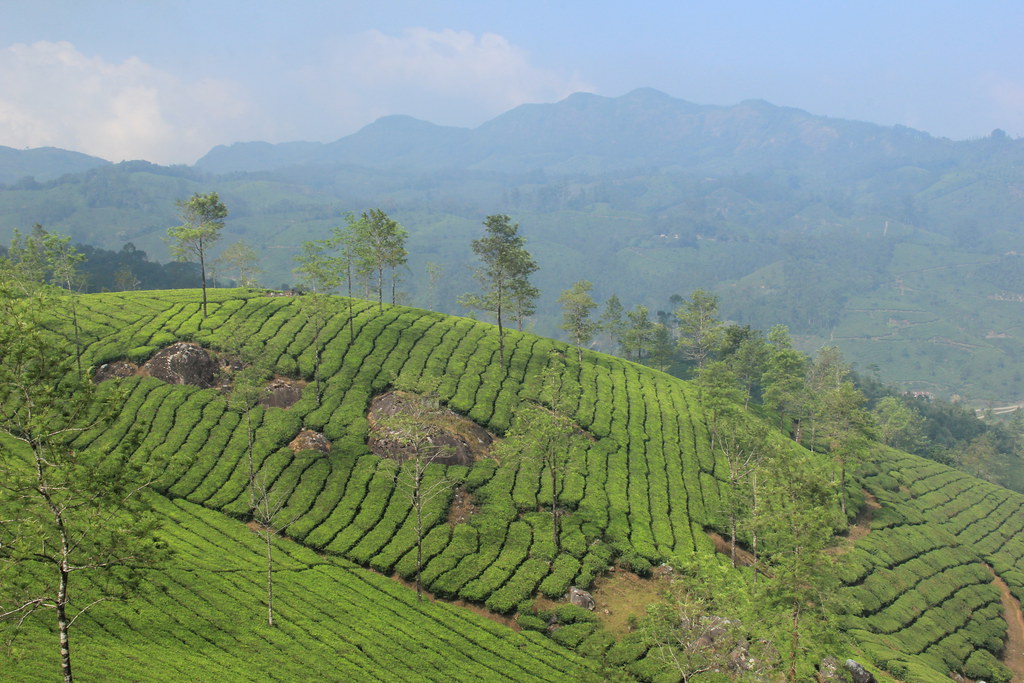

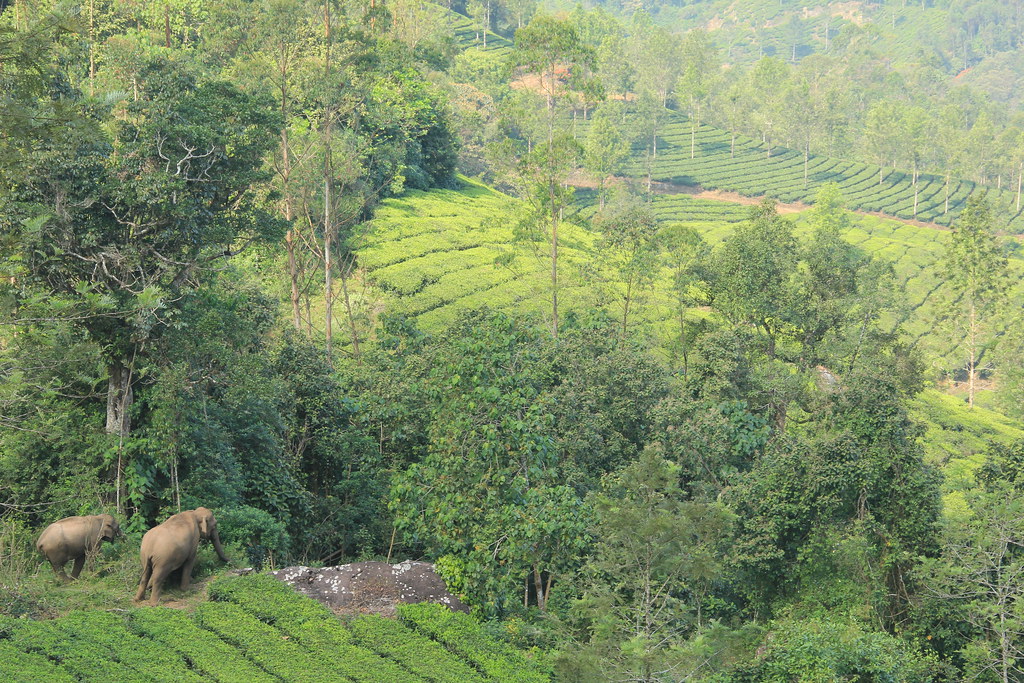
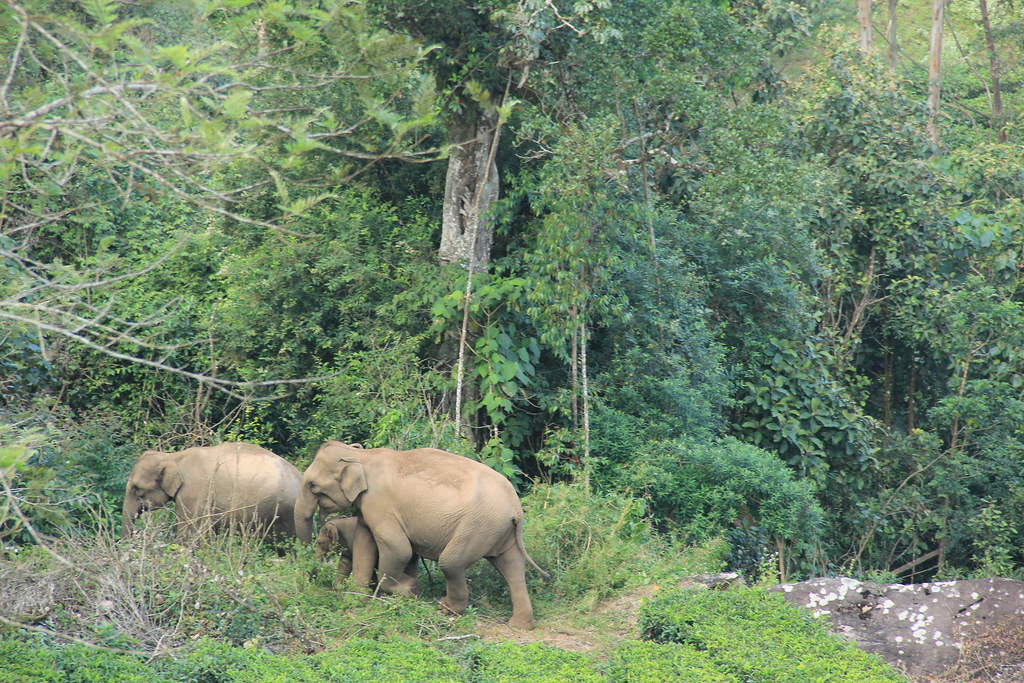













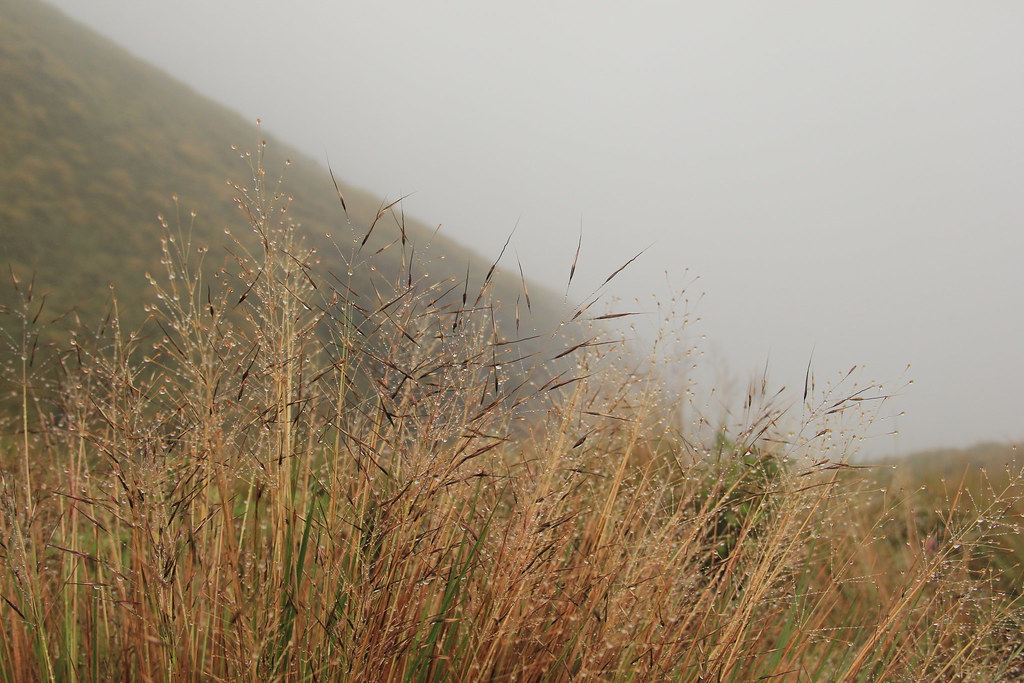










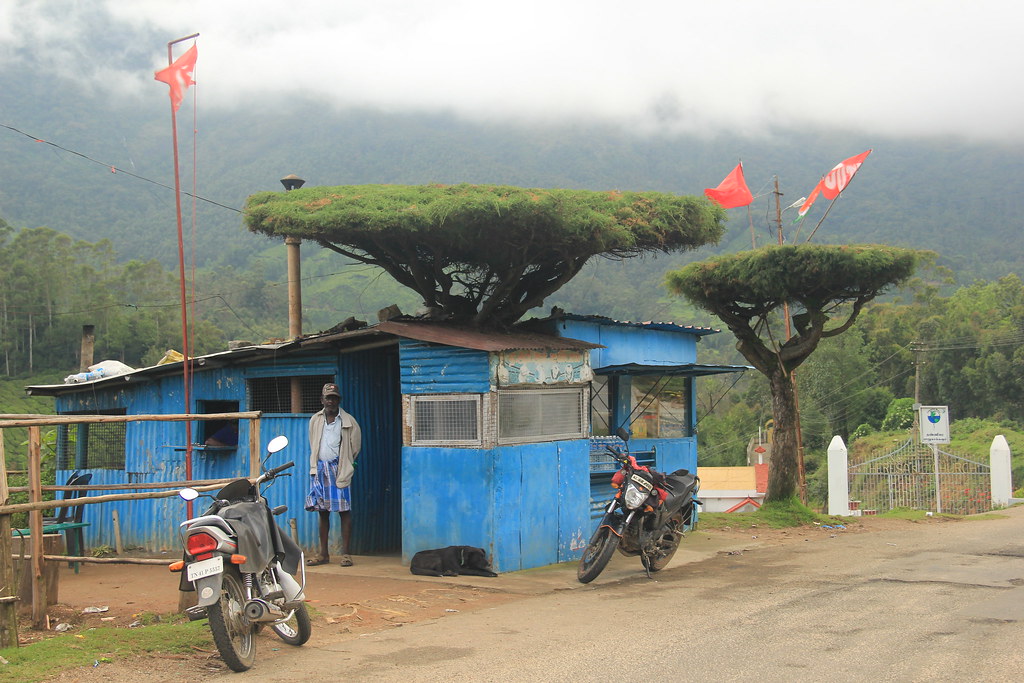




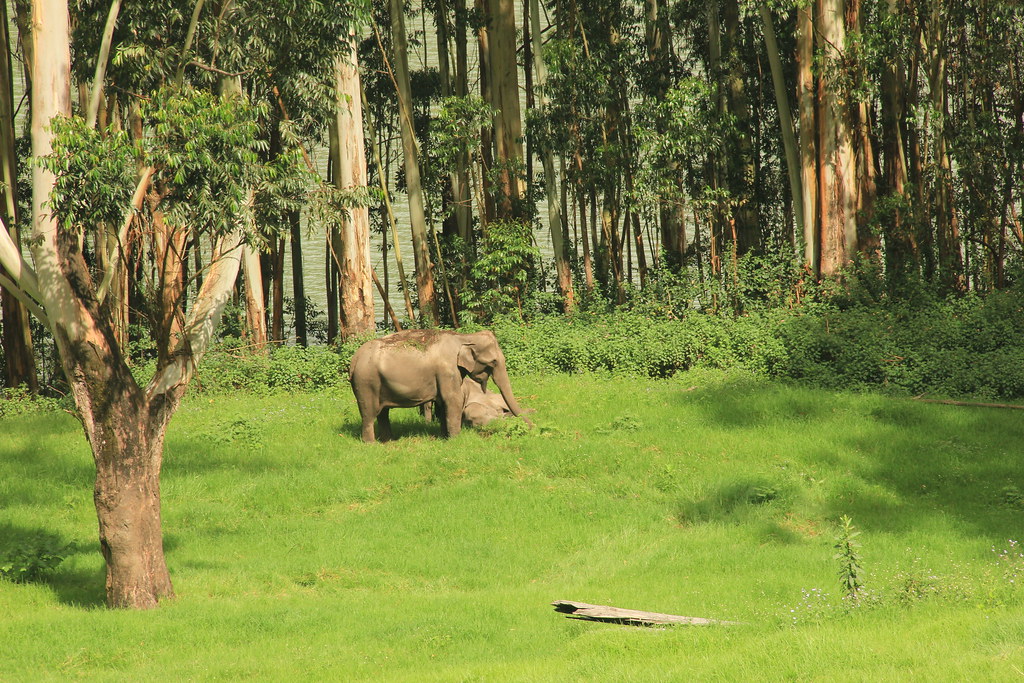
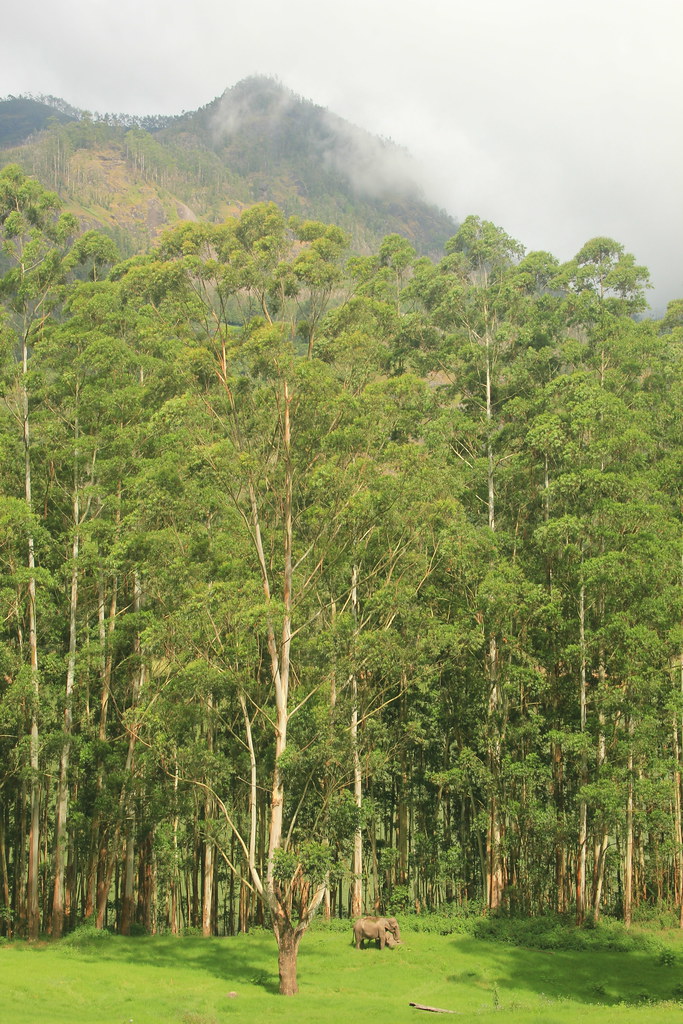



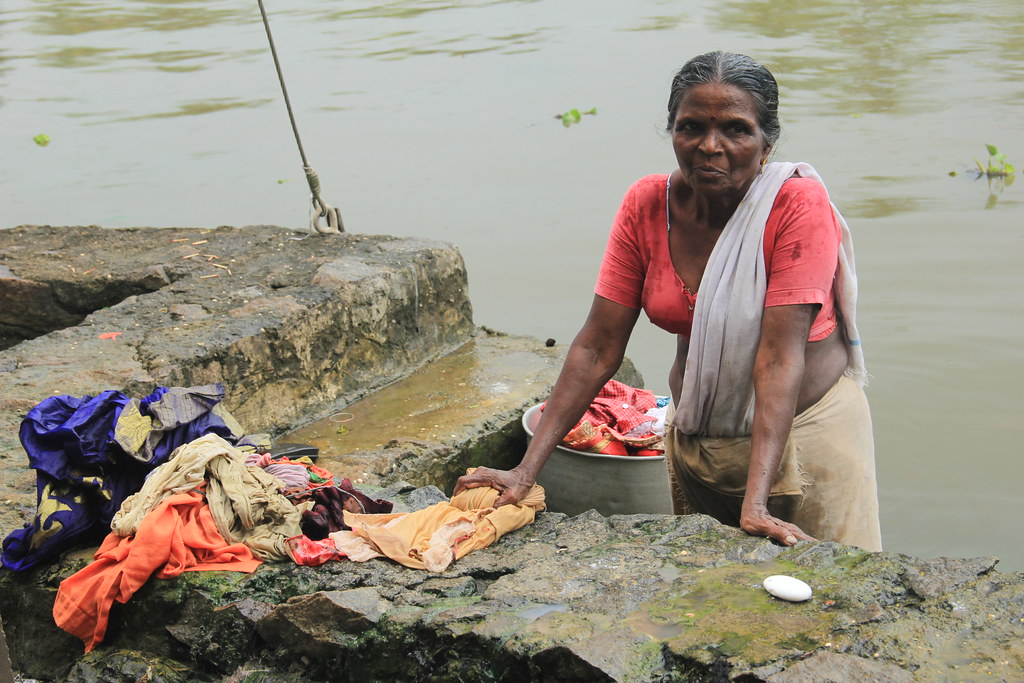










10 Comments
In love with these photos of tea plantations! They look like a huge labyrinth. 🙂
I thought that too! And totally one worth getting lost in 😀
What an amazing journey this is! I’ve never been but your lovely photos are very inspiring.
Thanks Zoe! The tea plantations were so photogenic 🙂
So inspiring <3 love it!
http://carmelatte.co/wedding-yacht-dubai-find/
Those green hills are just stunning! And those elephants are adorable. 🙂
Oh I know, I completely melted when I saw the elephants! 🙂
kiara, what an utterly thoroughly detailed post! Looks phenomenal. This is definitely on me and my husband’s bucket list.
Good to hear! Hopefully you’ll be luckier with the weather than I was and actually be rewarded with some incredible views at the top of those climbs 🙂
Looks like a really gorgeous place – lots of greenery and beautiful scenery! Thanks for sharing. Would definitely explore there one day on my own jeep!